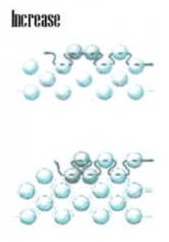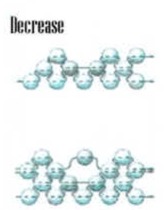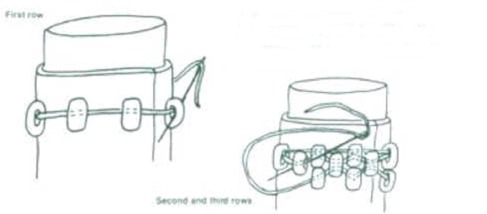|
|
Canku Ota |
|
|
(Many Paths) |
||
|
An Online Newsletter Celebrating Native America |
||
|
June 2, 2001 - Issue 37 |
||
|
|
||
|
The Beading Series - Part 7 |
||
|
by Lynne Sageflower Pennington |
||
|
|
| This is the second to the last Beading Series Article. It is on The Gourd Technique. It is also known as the Peyote technique. Out of respect to many American Indian people I am going to refer to this stitch as the Gourd stitch not the peyote stitch. | |
| Gourd stitch. It is a single needle technique that is worked back and forth for rectangular shapes, and in a spiral or in rounds for circular or tubular shapes. However there is an exception to this rule when you use two needles. | |
|
|
|
| Flat Gourd Stitch ( Even Count) instructions | |
| For the purposes of these instructions I am going to use 6 beads | |
| Row 1&2. | |
| Thread one bead onto you thread and then bring thread through the bead to form a loop. Pick up 5 more beads. These 6 beads will comprise your first two rows. | |
|
|
|
| Row 3 | |
| Pick up another bead, then pass your needle down into the second bead of first row you did before adding the bead. | |
|
|
|
| Add another bead , skip the next bead and pass the needle down into the next bead ( which would be the fourth bead of the 6 you strung first) | |
| End this row by going through the first bead you did. | |
| To start row 4 and all the remaining rows, pick up a bead and go through the last bead added on the previous row. | |
| To increase and decrease | |
| Increase | |
|
|
|
| 1. At the point you want to increase pick up two beads instead of one. Then pass the needle through the next bead | |
| 2. When you reach the double beads on the next row, go through the first bead, add a bead, then go through the second bead. | |
| Decrease | |
|
|
|
| 1. At the point you want to decrease, do not add a bead. Go through 2 beads of the previous row. | |
| 2. When you get to the point where you went through the two beads, pick up one bead and then continue the regular gourd stitch. | |
|
|
|
| Flat Gourd ( odd count) Instructions | |
| The directions are basically the same as for the even count only the first row of beads you start with will have an odd count. | |
| For example: instead of having 6 beads to start with as I did in the even count I would have 7. | |
|
|
|
| Two Needle Gourd Stitch | |
| . | |
| For these instructions I am going to use 21 beads | |
| 1. Thread one needle on each end of one piece of thread. | |
| 2. Pick up one bead on each needle, then slide the beads towards the middle of the thread. Make sure you have even lengths. | |
| 3. Now pick up one bead on one of the needles. Pass the other needle through this bead. Bring it down towards the other two beads to make it snug. | |
| 4. Now pick up another bead on each needle and bring them down to make them snug with the single bead. | |
| 5. Continue # 3 & # 4 till you count 21 beads. These will be your first three rows. Your end bead ( single bead) will be bead #14 of the second row. | |
| 6. Now, repeat as you did above, but when you reach the end, bring the beads around into the first three rows so they fit. When you reach the end, pass the needles through bead #21 and start again for the next rows. | |
| I have tried to explain how to do this technique but after I few rows I get confused so my best advise is to go to Suzanne Cooper's beading classroom. This technique is called Two Needle Start | |
|
|
|
| Gourd Even Count Tubular Stitch. | |
|
|
|
| Before even attempting this stitch if you have never done it before I suggest you practice it. The reason I say this is to get the tension right. You do not want your work to be too loose. I found this tip on the web but I do not remember where. I looked for it again but could not find it | |
| I took an empty toilet paper roll and used it to practice. I wrapped the first three rows of my two needle flat gourd stitch around it. Then if I needed the toilet paper roll smaller I cut it length wise and taped it to fit the size I needed. Oh, a good thing to make sure of is that the tube is the same size all the way down its length. Other wise you may be to loose on one end or in the middle. | |
| O.K. ready here we go. For these instructions I am going to use 14 beads. | |
| 1. String 14 beads onto your thread, then go through the first two beads to form a ring. | |
| 2. Now add your next bead and continue as if you are doing the instructions for the flat gourd stitch. Now when you get to the 14 bead add bead 21. | |
| 3. Now pass the needle up through bead 2 and 15, add a bead ( this will be bead 22) | |
| 4. Now go through bead 16, add another bead ( this will be bead 23) | |
| O.K. I am going to stop here, the best graphics to show how to do this technique are on Suzanne Coopers web site also. | |
| Some of the Graphics in this Article are from The Beader Companion by Judith Durant & Jean Campbell- the Web site to purchase this book is listed below. | |
| The Next Beading Series Article will be the last one in the Series. It will be on The Double Curve Motif and Huichol beadwork. | |
|
|
|
|
Web Sites:
|
|
|
Books:
|
|
|
|
|
|
|
||
|
|
||
| Canku Ota is a free Newsletter celebrating Native America, its traditions and accomplishments . We do not provide subscriber or visitor names to anyone. Some articles presented in Canku Ota may contain copyright material. We have received appropriate permissions for republishing any articles. Material appearing here is distributed without profit or monetary gain to those who have expressed an interest. This is in accordance with Title 17 U.S.C. section 107. | ||
|
Canku Ota is a copyright © 2000, 2001 of Vicki Lockard and Paul Barry. |
||
|
|
|
|
|
The "Canku Ota - A Newsletter Celebrating Native America" web site and its design is the |
||
|
Copyright © 1999, 2000, 2001 of Paul C. Barry. |
||
|
All Rights Reserved. |






